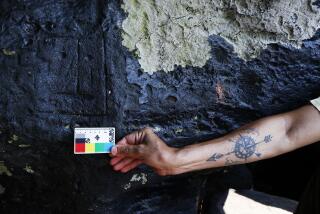Rocks show the Amazon didn’t always flow east
- Share via
The Amazon River flows east through South America, pouring 8 trillion gallons of water into the Atlantic Ocean each day -- but about 100 million years ago, the world’s mightiest river flowed west, from the Atlantic toward the Pacific.
Evidence of the surprising shift comes from mineral grains in sedimentary rocks deposited along the central portion of the 4,000-mile river.
Russell Mapes, a graduate student at the University of North Carolina in Chapel Hill, determined that those grains of zircon were about 2.5 billion years old.
That’s roughly 2 billion years older than zircon from the Andes mountain range along the Pacific coast of Peru, the current home of the Amazon’s headwaters.
Mapes concluded the zircon must have traveled downstream from the east, not the west.
“It’s very easy to tell a zircon from the east versus one from the west just because of its age,” said Mapes, who presented his findings Wednesday at the annual meeting of the Geological Society of America in Philadelphia.
The telltale zircon is much older than the continent itself, ensconced in rock before South America split off from Africa about 100 million years ago.
The separation produced a highland area around what is now the mouth of the Amazon, Mapes said. From there, the river ran downhill toward the Pacific.
Those highlands settled over time. Meanwhile, a ridge called the Purus Arch rose in the Amazon River basin, splitting it down the middle. West of the arch, water continued to flow toward the Pacific. To the east, it flowed to the Atlantic.
As the Andes Mountains rose along the Pacific, they took over as the river’s source. Easterly flowing water eroded the Purus Arch.
Mapes’ colleagues in Brazil estimate the Amazon emerged in its modern form a mere 5 million years ago.
“It’s pretty interesting to think about how transient the surface of the Earth is,” he said. “It can change dramatically in a relatively short period of time.”
More to Read
Sign up for Essential California
The most important California stories and recommendations in your inbox every morning.
You may occasionally receive promotional content from the Los Angeles Times.













